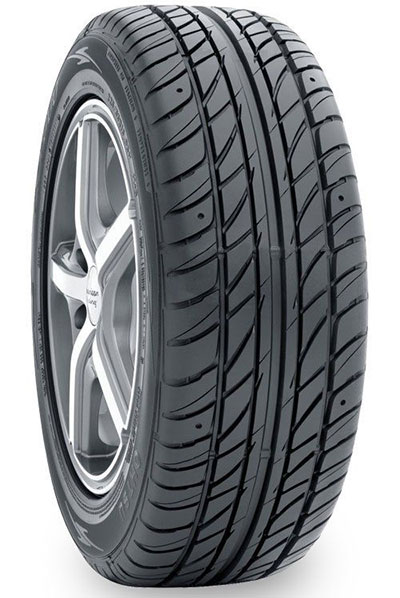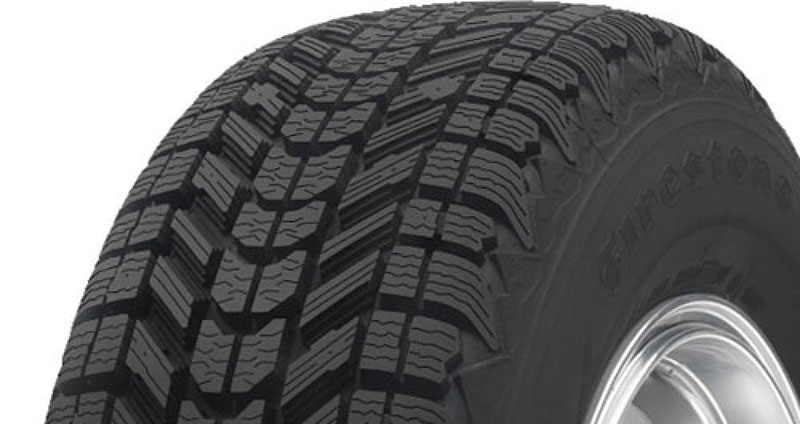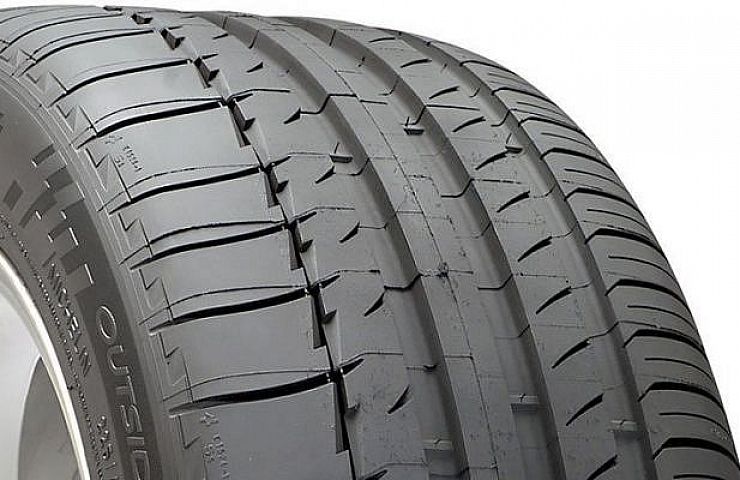
All-season tires have more aggressive tread than a dedicated summer tire, but their rubber compounds aren’t meant to withstand freezing weather.
Every year, we get asked this question when the fall season arrives: “Do I really need to invest in a set of winter tires?”
The person, who usually lives in a cold part of the world, is hopeful that the set of all-seasons they’ve been riding through the spring and summer will safely carry them through the winter months as well.
We hate to break hearts, but here’s the cold reality: once the mercury drops below 40 degrees Fahrenheit, if you aren’t riding on a dedicated winter tire, then you’re not only putting yourself at risk but you could also be endangering those around you.
Summer tires (shown above) sacrifice the ability to channel slush and snow in favor of maximizing grip, but unfortunately their soft rubber compounds solidify in the winter.
Not Snow Tires: Winter Tires
Winter tires are not synonymous with snow tires. Don’t believe anybody who says that you are excused from the chore of winter tire shopping if you aren’t regularly fording through a couple feet of snow on the way to work. Unfortunately, cold temperatures are just as, if not more dangerous than, snow on the ground when it comes to winter driving. All-seasons simply can’t offer the same level of safety as a dedicated winter set of rubber.
Compounding The Problem
All-season tires like these Falkens feature a rubber compound that stiffens up around 40 degrees, decreasing the amount of grip it has on dry pavement. It’s right around this point that most all season tires see their traction degrade to the point where stopping distances increase by as much as 30 percent—a number that only gets scarier the colder it gets.

Winter tires offer blocky tread designs and rubber compounds that won’t stiffen up like a hockey puck when the temperature nears the freezing point.
Winter tires like these Firestones, on the other hand, are made of a rubber compound that stays soft and supple even when city streets look like a frozen wasteland. This enables them to maintain a safe contact patch with the pavement below, and it also helps their blockier tread pattern stick better to snow, and channel away water and slush while traveling over ice. It’s a fundamental chemical difference between all-season and winter tires, and in an emergency-stop situation, or when the road gets twisty, it can save your life.
All-Wheel Drive Won’t Cut It
The proliferation of all-wheel drive has created a situation where thousands of winter drivers feel secure with their all-season rubber because they have enough traction to make decent headway in the snow. Unfortunately, while all-wheel drive might get you going when things are slippery, it won’t help you stop or turn a corner in cold temperatures—which is why you see so many SUVs in the ditch during those first few winter weeks.
It’s not worth gambling with your family’s safety, or the security of those around you on the road, simply for the sake of saving the cost of a set of winter tires. Picking a right-size set of winter rubber for your vehicle could be the best purchase you make as we approach the holiday season.





